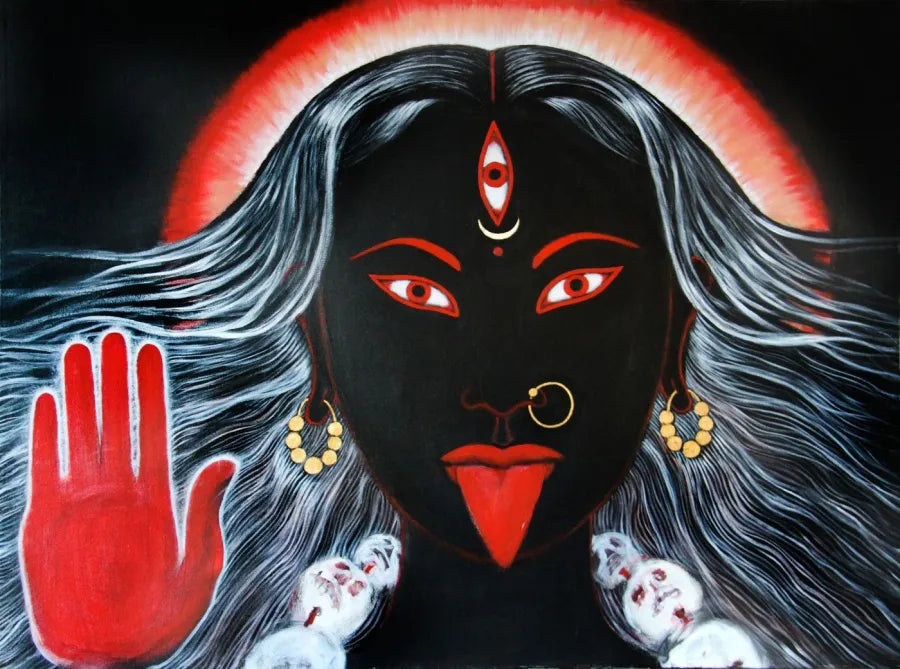Introduction
Goddess Kali, often referred to as Goddess Kali Ma in Hindu mythology, is a captivating and often misunderstood figure. Far from being just a goddess of destruction, she embodies complex symbolism and holds various forms that signify different aspects of life and spirituality. In this blog, we'll explore the symbolism, forms, and stories related to Goddess Kali Hindu, aiming to shed light on her multi-dimensional persona.
Symbolism of Goddess Kali
The Popular Form and Its ElementsGoddess Kali is most commonly depicted as a dark blue-skinned deity with four hands, a garland of skulls around her neck, and her tongue sticking out. This Goddess Kali statue is rich in symbolism:
Crescent-Shaped Sword: This represents divine knowledge, cutting through ignorance.
Skull: Symbolizes the severed ego.
Bowl of Blood: This is tied to the story of Kali slaying the demon Raktabija, signifying her role in the destruction of evil.
The Rage and The Calm
Her red eyes filled with rage and her posture often signify her destructive nature. However, this is not mindless destruction but rather a transformative force, much like time, which destroys but also makes way for new creation.
Forms of Goddess Kali
1 Mahakali
Mahakali is the grandest form of Kali, depicted with ten heads, arms, and legs. She is considered the ultimate reality, the source of all that exists, and even the power behind other gods and goddesses.
2 Samhara Kali
This is the most dangerous and ferocious form of Kali. She is the presiding goddess of chief tantric texts and is mainly worshipped by tantriks. Samhara Kali grants both death and liberation, embodying the cycle of destruction and rebirth.
3 Dakshina Kali
This is the most benevolent and loving form of Kali, mainly worshipped by householders. She grants blessings and boons to her devotees and is so powerful that even Yama, the god of death, fears her.
Other Forms
There are many other forms of Kali worshipped by different sects, including Guhya Kali, Bhadra Kali, Raksha Kali, and Kamakala Kali, each with their unique attributes and significance.
| CLICK HERE TO KNOW MORE |
Stories Related to Goddess Kali
1 Kali and Shiva
In one of the most famous stories, Kali becomes so engrossed in the battle against demons that her fury becomes uncontrollable, threatening to destroy the world. To stop her, Shiva lies down in her path. When Kali steps on him, she realizes her mistake and calms down, sticking her tongue out in embarrassment.
2 Slaying of Raktabija
In another tale, a demon named Raktabija had the power to produce a clone of himself every time a drop of his blood touched the ground. Kali defeated him by drinking all his blood before it could reach the ground, preventing any more clones from being created.
3 Kali and Ramakrishna
Sri Ramakrishna Paramhansa, a saint and the guru of Swami Vivekananda, had unparalleled devotion to Kali. His life offers numerous instances of his divine connection with the goddess, making him an integral part of any discussion about her.
Conclusion
Goddess Kali is not merely a symbol of destruction. She embodies liberation, protection, and transformation. Understanding her symbolism, forms, and stories helps us appreciate the depth of her character and her significant role in Hindu mythology.

